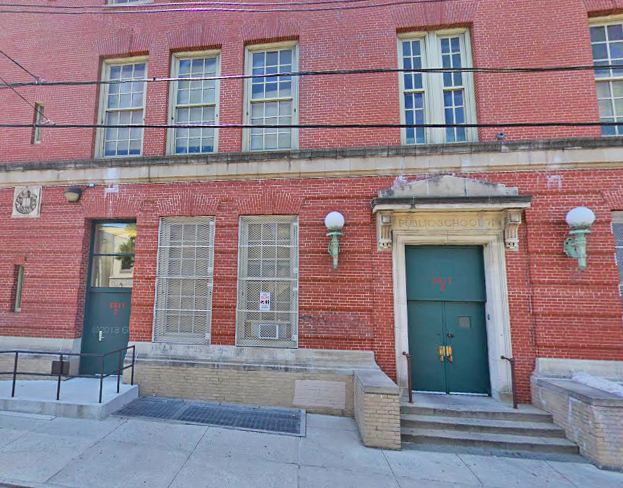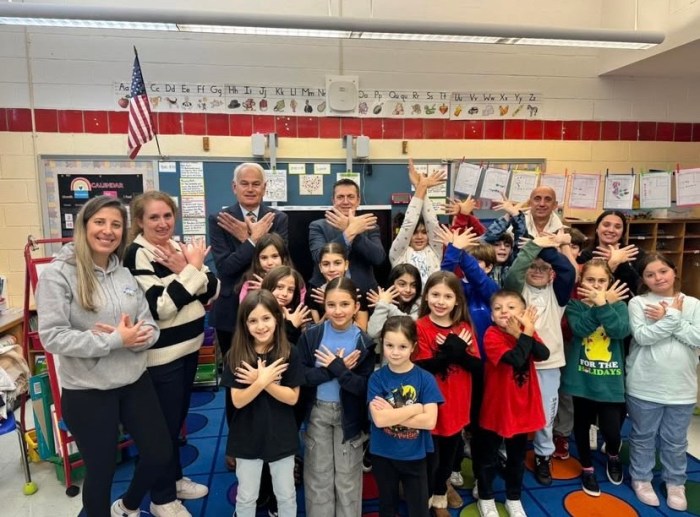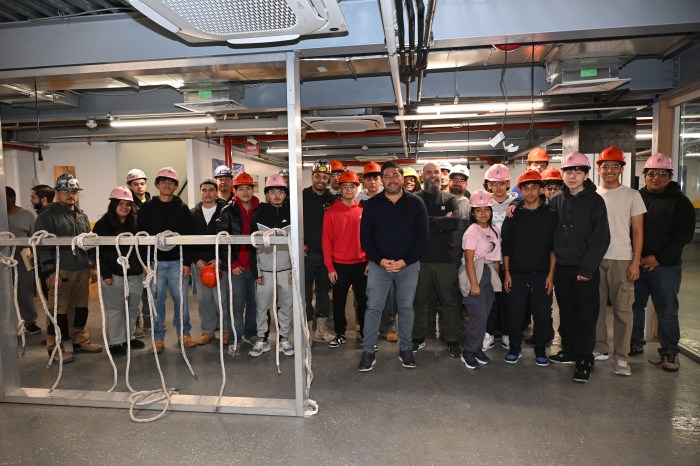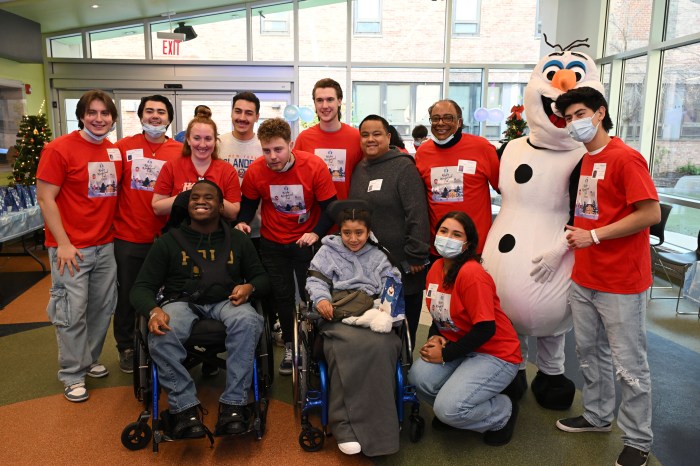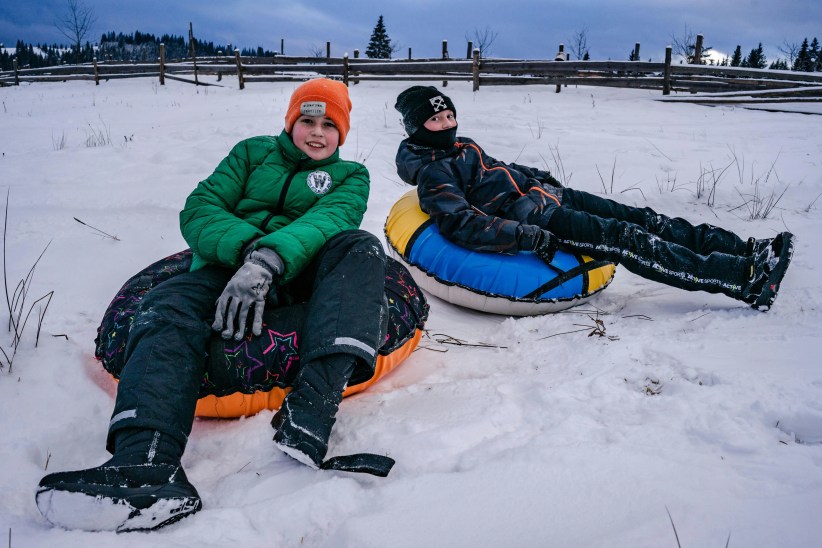Some parents and teachers are defending the blended learning curriculum at P.S. 71 Forest Elementary School after a group of parents claimed the school used Zoom too much during in-person instruction.
On Dec. 7, a dozen parents began protesting outside of the Ridgewood elementary school, saying their kids who are enrolled in blended learning, which allows for students to be in school buildings for two to three days out of the week, are on Zoom “all day,” even during in-person class. But some parents and teachers don’t agree with the characterization.
Nicholletta Montecalvo, a fourth-grade ICT teacher at P.S. 71, told QNS that while the transition to remote learning wasn’t what the school community expected nor wanted, they have managed to work with the cards that were dealt to them as a result of the COVID-19 pandemic.
“When this program came out to represent our school, it wasn’t just the principal or the administration,” said Montecalvo. “Ms. Soto, who is the school principal, truly believes in shared decision-making. “We always keep the students and our families in the forefront.”
Montecalvo said Principal Indiana Soto had a core group of about 25 teachers who helped design the school’s blended and remote learning program to not only benefit students and parents, but to also work with teachers, including those with underlying medical conditions who must work from home.
Montecalvo said claiming blended learning students spend all day on Zoom during in-person instruction is a “misrepresentation.”
P.S. 71, which has 634 students (half of them in blended learning), created a plan to allow for teachers to give live instruction both when students are in the school building and while they’re learning remotely, despite the Department of Education’s (DOE) original recommendations of having one teacher in each separate model.
“The development was in mind to ensure that the students and the teachers still felt like they were part of a class,” Montecalvo said. “We unanimously decided we did not want live streaming, we wanted to be present with our kids as we provided instruction.”
There are currently about 10 teachers who are teaching from home out of about 90 teachers who are in the classroom with their students, according to Concetta Lacerenza-Perrotto, ESSA Coordinator at P.S. 71.
Montecalvo, one of the teachers working from home, explained her students in blended learning will spend about two hours between live instruction and breakout rooms on Zoom throughout their in-person school day. The rest of the time they’re working with paraprofessional instructors in the classroom.
Lacerenza-Perrotto explained that the time spent on Zoom and live instruction changes depending on the students’ grade, in line with the DOE’s guidelines.
She added that with the uncertainty of school or classroom closures due to the pandemic, they wanted to create a program that allowed for flexibility.
“We wanted to make sure that no matter what learning preference that child had, whether they’re remote or blended, had 110 percent the same instruction throughout,” said Lacerenza-Perrotto. “So it was a seamless and easy transition — a child would just have to take their laptop and just as they’re familiar and independent with working on Google classrooms, Zoom and all those multiple platforms in the building, that in the event that we had to close, our students were independent as well.”
And public schools did close for a two-week period in November, after the city reached 3 percent infection rate, a threshold that was agreed upon months prior between Mayor Bill de Blasio and the United Federation of Teachers (UFT).
“As soon as the kids opened up the next day, they had the same features, the same consistency, and we didn’t change curriculum; we just taught the next lesson,” said Montecalvo. “Then, we came back to school, the kids went into their classrooms on Zoom and, again, there was that continuity of the instructional core, where we just picked up right where we left off those two weeks the entire city shut down. Our kids didn’t even feel that anything changed, because it was just the same routine and structures we have established since Sept. 21.”
Elementary schools then reopened on Dec. 7, which was when some parents began protesting outside of P.S. 71.
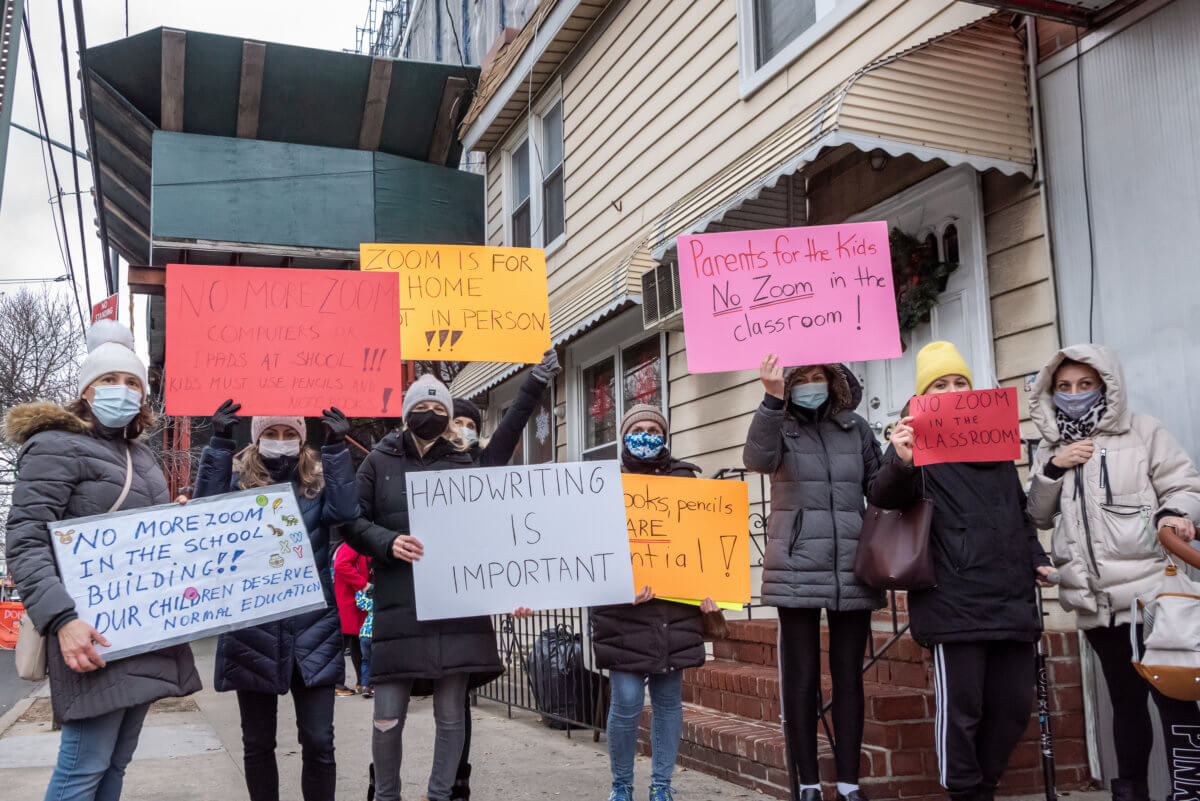
Other parents, though, were confused about the protests.
Angeline Andreu, a parent of a fully remote fourth-grade student, said she was skeptical about the whole program before the school year began, but is happy to see her son, who is fully remote, is responding well.
“I don’t know where they would have gotten the whole fact that they’re just sitting in front of Zoom all day, because it’s not what my son is doing, and he’s a remote student,” Andreu said.
Andreu said parents and students at P.S. 71 “should be proud” of the program the school created, as all schools were left to figure out what curriculum will work for their school population.
“We’re all having to change, we’re all having to do something new,” said Andreu. “So, is it going to be great? Usually change is not great, right? It takes a while, but we have to push our kids, we can’t just be like, ‘Well, this is how it’s always been and this is how it should be.’ No. The world changes.”
One of the complaints from parents who protested the school’s in-person instruction was that some classrooms don’t have teachers present, just a staff member.
But Montecalvo emphasized that their paraprofessionals aren’t “substitutes” nor “babysitters.”
Christine Zaky, a paraprofessional classroom manager who’s worked in pre-K and second grade for the past five years, said she’s glad to do the work that teachers do in a classroom setting.
“All we do all day long is hands on [work], making sure that kids are writing, making sure that kids are up finishing their math problems in the math book and writing down their own math problems in their notebooks,” said Zaky, adding that some kids will write on their notebook then submit images of their work online. “Kids are experts, they’re using computers like I can’t even tell you.”
Steven Roesler, a fifth grade ICT teacher, said Zoom helps students in blended learning and fully remote learning work together so it still feels similar to a classroom setting.
Grace Wilson, a fifth-grader in Roesler’s class, said she really enjoys going to school in-person and being on Zoom at times.
“I really, really like going to school because when I’m in school, I get to see some of my friends that go to school. And if you take away Zoom, I can’t see my friends at home,” Wilson said. “In Mr. Roesler’s class, he puts some kids that are in school and some kids that are at home, together in breakout rooms and we talk about our work, and we collaborate with the kids at home. If we don’t collaborate with the kids at home, they’re going to be confused … And there’s kids who work better with people who have more of an advantage, like speaking up more and more confident in answering questions.”
She added that if some kids have different teachers for in-person and remote learning, they might feel uncomfortable. Dave Wilson, Grace’s father, said splitting up remote and blended students halfway in the school year “wouldn’t be right.”
Daniela Carollo, a kindergarten teacher at P.S. 71, is usually in the classroom with her blended-learning students, and found that even 5-year-olds can log in to Zoom and other platforms like Google Classroom by themselves.
“I think all the kindergarten teachers do a very good mix of, ‘OK, we’re going to do something on Jamboard now, which is fun and engaging, but we’re also going to read a story and we’re going to practice writing our letters or sounding out the letter to figure out what the word is and write our numbers,’” said Carollo. “We don’t want them to go into first grade, and not know how to be able to write because they’re on Zoom.”
Mirna Alvarez, a parent of a pre-K student and a second grade student at P.S. 71, said she considers the school as one of the best not only in the city, but the country.
“Parents also have to remember that we’re in the middle of a pandemic,” Alvarez said in Spanish. “I know this change is hard for parents, but we have to be thankful that at least our kids haven’t stopped learning. If we want our kids to write on paper, we can do it at home. If we want them to read a book, we can do it at home. My daughters are reading books, not just on their iPads. It’s on us, too.”
Principal Soto met with the parents who were protesting immediately and several times individually after their protests. The school also held a town hall later that week with District 24 Superintendent Madelene Chan to come up with a resolution.
“One thing about every school is that nobody wants a parent unhappy,” said Montecalvo. “Our superintendent said it great the other night, when we had that family forum: ‘Even one parent not happy is one parent too many.’ Nobody knew what this year was going to be like. We’re doing what we can do to ensure that every need of every student is met, until we all can go back into a classroom again.”

